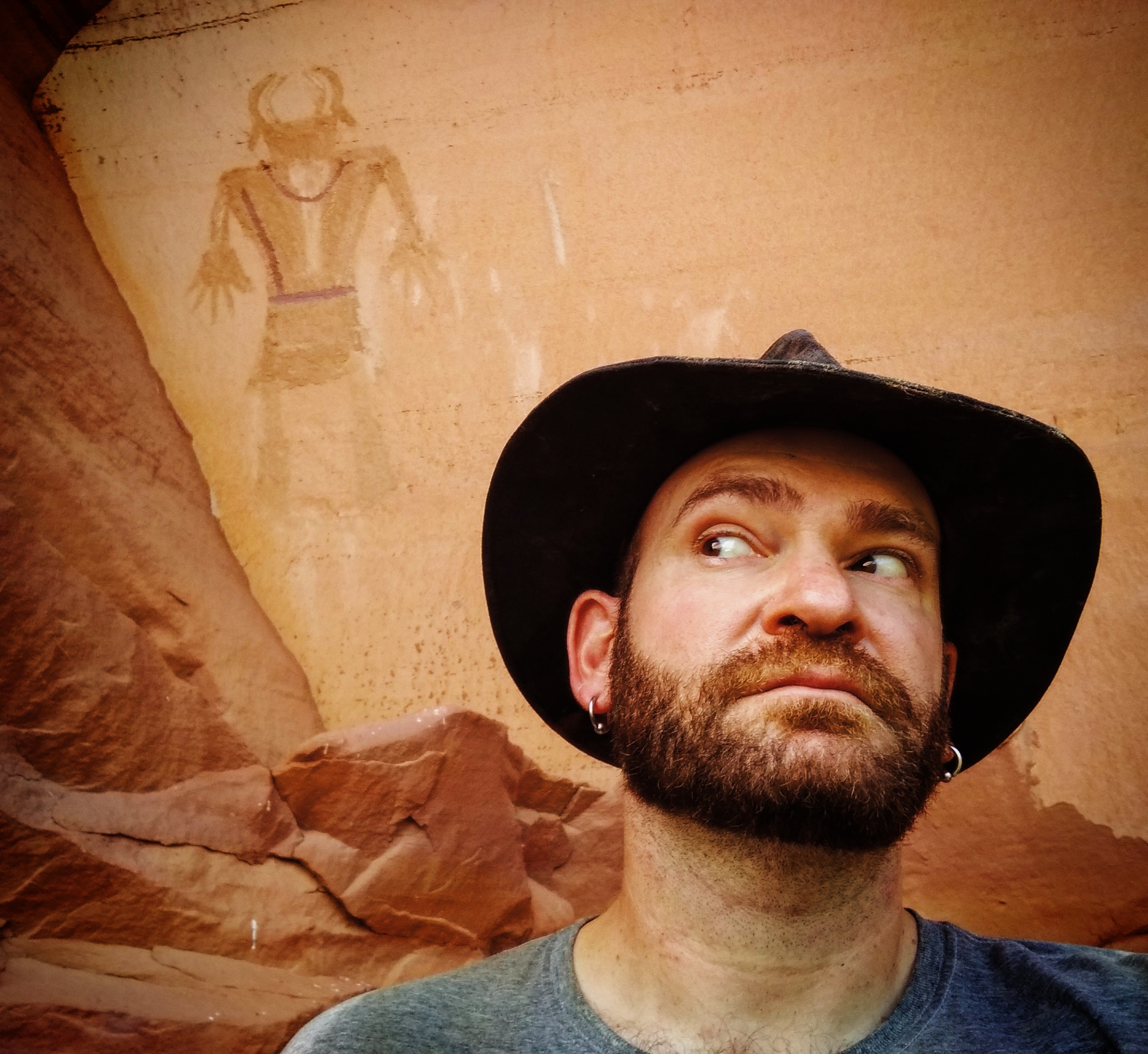Some information may be outdated.
Landscapes across the Colorado Plateau are not only physical, but cultural. Bears Ears, named for two enormous buttes, is one such place that has received increasing national attention. This week, we speak with archaeologist and author R.E. Burrillo, who outlines the human history of a region held sacred by the five tribes of the Bears Ears Inter-Tribal Coalition — the Hopi, Navajo, Ute, Ute Mountain, and Zuni tribes — and the many other descendent tribes with ties to the region.
Science Moab: Can you walk us through the main periods of human settlement in Bears Ears?
Burrillo: We see evidence of human history starting at least 12,000 years ago. The earliest period is what Western researchers call the Paleoindian Period. These earliest people were primarily occupying riverine areas where there was water that isn’t really there anymore. Then maize made its way up north, arriving in Bears Ears by 400 BC at the latest. Starting about 500 AD, you get much more sedentary settlements with more public architecture and a wider variety of cultivated plants. That gives way to the early Pueblo Period around 700 AD when you start getting the emergence of villages. Then comes the Chaco Period, which endured until about 1150 AD.
Then, due to changes in climate and probably many other factors, we move into Bears Ears’ terminal Pueblo Period, when people were living in cliff dwellings and shifting their occupation away from arable lands to a focus mostly on drinking water sources. Most of this area was depopulated by these Pueblo folks who consolidated into super villages. But the area wasn’t “abandoned.” We find tons of evidence that it was part of a grand migration cycle and that they certainly intended to come back.
Then, the predecessors of the Ute, Piute, and Diné people started to occupy the entire landscape. And that endures still. The really full-fledged Euro-American occupation began in the late 1800s, with Latter-Day Saints folks founding Bluff in 1880. And the rest is recent history.
Science Moab: What is the history of Western archaeology in Bears Ears?
Burrillo: The earliest ‘archeologists’ were, for the most part, just looters. It wasn’t until the 1890s that we see the beginnings of a more standardized, though still very colonialist, archaeology. We’re now heading toward a collaborative approach in which researchers consult and collaborate with Indigenous folks who have traditional cultural knowledge about this place.
Science Moab: What do you see as the role of Western scientists in Bears Ears now?
Burrillo: The role I see is one of an ally. I would like people who look and act just like me to focus on conservation and preservation and leave the interpretation of Indigenous history to Indigenous people. To that end, we need more Indigenous scientists and archaeologists.
Lyle Balenquah [a Hopi cultural resources consultant] has taught me that the Hopi don’t look at archaeological sites as objective and discrete things just sitting there. They look at them as a living part of their history—that these are footprints, which is the term Lyle taught me. They’re still alive, telling you a message that connects, and they’re inseparable. I never thought of that; I wouldn’t come to that conclusion. But it’s brilliant.
Science Moab: What do you think about the increased visitation in Bears Ears and its ramifications?
Burrillo: The problem with tourist visitation is that it’s death by a thousand tiny cuts. One person doesn’t have that much of an impact; a million people sure do. I think mitigating these impacts is also where science can be a tremendous help. We also need to tell folks that they’re visiting a place that is a living history for people who very much care about it. Treat it with respect.
To learn more and listen to the rest of R.E. Burrillo’s interview, visit sciencemoab.org/radio. This interview has been edited for clarity.
Appreciate the coverage? Help keep local news alive.
Chip in to support the Moab Sun News.





